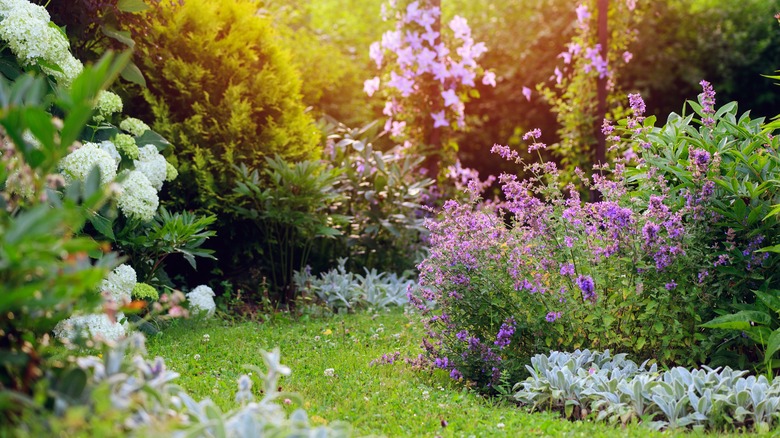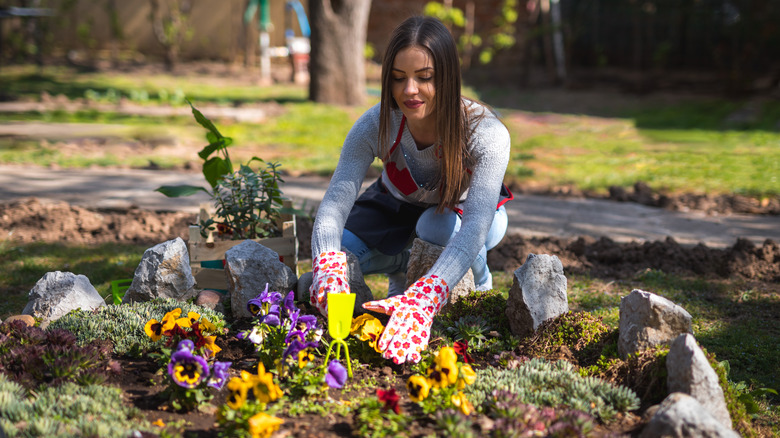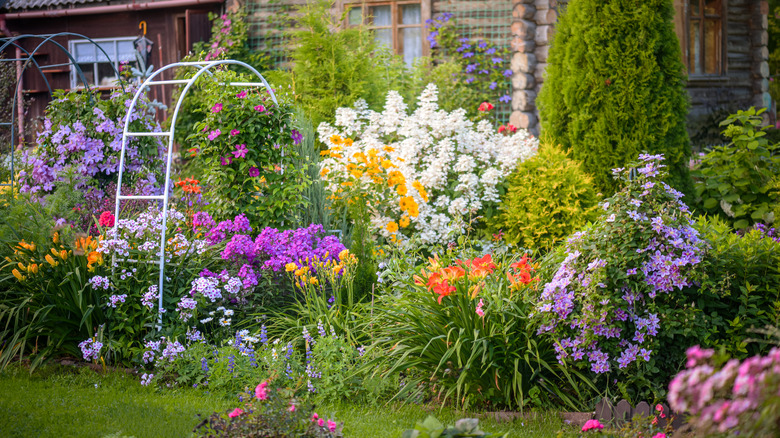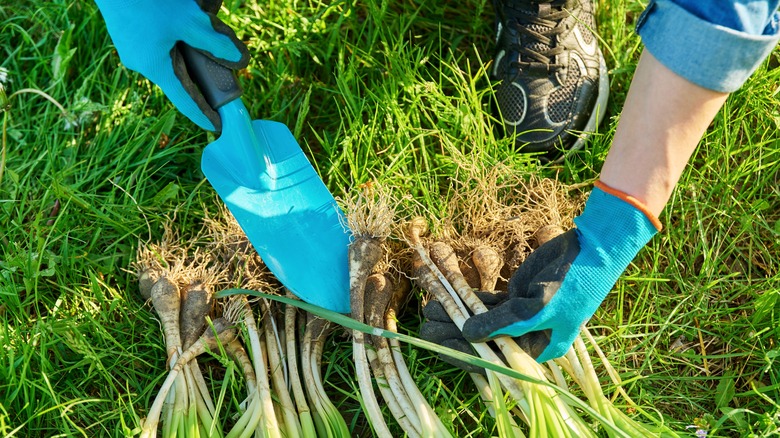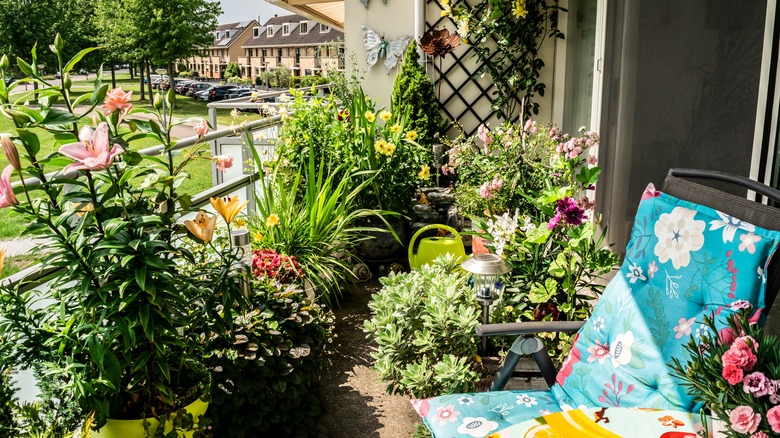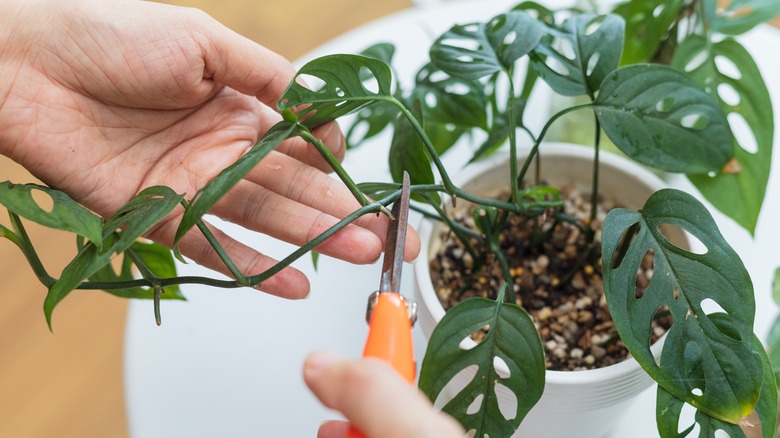What Is A Friendship Garden And How Can You Create Your Own?
Who doesn't love free plants? Sometimes a kind person is thinning out their garden and lists their extra greenery on an online marketplace. Occasionally, we might even see some on the side of the road with a sign that says, "Free!". But our favorite plant shares are those that come from people we love. Whether you are in a gardening community, a club, or just have a lot of gardening friends, a friendship garden is a special way to share plants.
Friendship gardens do not consist of perfect landscaping or specific color schemes. They are filled entirely, or almost entirely, with plants received from friends and loved ones. These gardens are simple and usually include plants that are easy to grow. Friendship gardens look more like simple cottage gardens than intricately designed landscapes. That's why we love them. Instead of thinking about how much you spent at the garden center as you walk through your garden, you can express gratitude for each person from whom you received a plant. As your friendship garden fills up, you'll have some plants to pass along for someone else to enjoy.
Select a location
Selecting the right location is one of the most fun yet challenging aspects of a friendship garden. Since you don't know the specific kinds of plants you will receive over the years, a spot that offers various levels of sunlight is ideal. For example, if a friend is sharing beautiful variegated hosta plants, you'll need a shady spot for them to thrive. Someone else may gift you some Asiatic lily bulbs, which need full sun to produce vibrant blooms. An area of your yard with a small tree in the center is ideal. Dwarf versions of ornamental cherry or crabapple trees make a beautiful focal point, as do smaller native trees like redbuds or serviceberry. Since very few plants tolerate soggy soil, select a spot with good drainage.
With your location chosen, you will need to prepare the space. Start small your first year. Remember that a friendship garden will grow slowly, so make room for what you expect to receive in the first few years. Then, you can expand your space as you get more plants. Select edging that will be easy to move as your garden grows. Loosen the soil, remove all grass and weeds, and work about an inch of compost into the top layer to give your plants an environment where they can thrive.
Choose your layout
As we mentioned, the design of a friendship garden is not an exact science. It will grow and change as you add more plants and thin out your excess to share. Although it may be constantly evolving, there are a few rules to planning a general layout. First, as with all gardens, you will need space to put the tallest plants in the back. If you sow seeds for tall, reseeding annuals like cosmos or mammoth zinnias, those blooms make a gorgeous cottage-style backdrop for smaller plants in the sunny part of your friendship garden. Large perennials like swamp milkweed or a Russian sage bush will have the same effect. The goal here is to mix and match with whatever you are fortunate to receive.
With your tallest greenery in the back, you can layer medium-sized plants in the middle and, of course, the smallest options go in the front. As you add to your garden, don't forget to consider the lighting requirements for each plant and place it accordingly. Because friendship gardens are made up of plants that transplant well, you can rearrange your garden as needed to make room for new additions.
Ways to share
Your friendship garden is not limited to plant divisions. Shared seeds, bulbs, and even whole plants can be added to your space to make it truly unique. They do not even necessarily need to come from a friend's garden. Live plants from funerals are a beautiful way to remember a loved one when they have passed. Another wonderful way to acquire plants is when a friend is moving and cannot take their landscape plants with them. If you have always admired the ferns at a buddy's house, ask if you can dig them up before they move.
Seeds are a wonderful way to share plants long distances. Columbine comes in a wide variety of beautiful colors that offer some of the earliest spring blooms. They also happen to make a prolific amount of seeds when the flowers are spent. Mailing a packet of seeds is a lovely way to stay connected with a friend. Just make sure those plants are appropriate for the climate. Bulbs and tubers like tulips, daffodils, and irises need to be thinned every few years, making them ideal to share. If your friend does not have a green thumb of their own, gifts like garden flags, birdbaths, or funny signs add even more interest to a friendship garden.
Create a container friendship garden
Maybe you love this idea but do not have much space for it. That's OK because containers are an option for many plants. If you live in an apartment with a balcony, herb divisions in containers can serve as a functional and beautiful friendship garden. Woody perennials like sage, rosemary, and lavender can be cultivated by sharing cuttings. These options offer culinary, aromatic, and beautiful additions to your balcony. It's nice to be able to think of a sweet friend while enjoying the calming scent of lavender.
Perennial blooms like monarda and salvia are easy to divide and grow well in almost any environment. Hostas also benefit from frequent division and do well in containers placed in shady areas. If you have a bit of sunny outdoor space, consider growing some plants vertically. Native honeysuckle can be planted from root cuttings and is a great plant to attract hummingbirds.
Share houseplants
No garden or balcony? No problem! Many houseplants are exceptionally easy to propagate and can allow you to fill your home with greenery from friends. To root many house plants, all you need is a glass of water. Begonias are exceptionally easy to propagate by cutting a portion of the stem and placing it in water for a few weeks as it grows roots. Pothos is another low-maintenance houseplant that propagates quickly in water. When the roots are a few inches long, place the rooted portion in good-quality potting soil, and voila — your own mini indoor friendship garden. Aloe, Christmas cactus, and Monsteras are just a few other houseplants that are easy to divide and share.
Whether you have hundreds of square feet of outdoor garden space or a small ledge by your kitchen window, you can reap the benefits of a friendship garden. We know that plants and gardening are good for our health, but adding the warm feeling that comes with knowing all the love represented in your space? Well, that's priceless.
